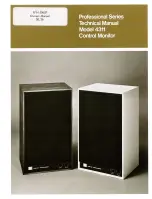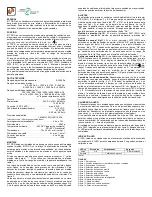
Model DT333-0700
4-Wire mV/TC Dual Transmitter w/USB
Acromag, Inc. Tel: 248-295-0880
- 20 -
http://www.acromag.com
- 20 -
https://www.acromag.com
Configuration
…
The Configuration screen is the first screen at left. When you clicked
the “
Configuration
” tab, the software retrieve
d
the unit’s current
configuration and displayed it as shown at left.
IMPORTANT:
DT models have three modes of operation: Dual
Transmitter, Single CH1 Transmitter, and CH1 Signal Splitter. Your
Configuration screen will vary slightly with the Operating Mode
selection. The second screen at left is for CH1 Single Transmitter
mode, the third screen for CH1 Signal Splitter mode. For single CH2
transmitter operation, select dual transmitter mode and ignore CH1.
When connected to a module, the initial Configuration screen
represents the current configuration and operating mode of the
connected module before making changes. Otherwise, if you have
loaded the configuration from a saved file, or have made changes to
any fields, you can choose to click
[Get I/O Config]
to retrieve the
connected
module’s current configuration.
Note that if you make any changes to the configuration indicated,
the only way to preserve your changes is to write them to the device
by clicking
[Send I/O Config]
after completing your changes, or by
saving them to a file by clicking
“
F
ile”
in the upper left-hand corner
of the screen.
Select the Input Type/Range for the Channel
…
Input Type refers to the nominal input range wired to TB1 (channel
1) or TB3 (channel 2) and you may select TC types J, K, T, R, S, E, B,
N, or ±100mV. Note that nominal input ranges may be rescaled.
Any nominal input type/range you pick here can be rescaled to the
output, allowing you to use only a portion or sub-range of the
selected type to drive its current or voltage output, as desired. Keep
in mind that your resolution will decrease proportionally as you
rescale the input signal to smaller sub-ranges. Each halving of the
nominal range will reduce resolution by 1 bit. This can also magnify
error, especially noticeable for very small input ranges (less than 12
bits) which degrade the signal-to-noise ratio of the input and
resolution of the analog-to-digital conversion.
Select the Input Filtering
…
You may select the level of digital filtering to apply to the input
channel as Low, Medium, High, or None (No digital filtering). I/O
response time varies with input filter selection and typical times are
indicated in parenthesis next to filter selection. Higher filter levels
result in lower average noise, but with a slower I/O response time
(see Specifications for detail).
















































